2023 Range Rover interior reimagines luxury. Meet the person behind it

As automotive journalists, we’re often asked “how did you get that job?” People usually didn’t even know you could do such a thing. In this 7 Questions series, we’re highlighting other jobs in the automotive industry that you might not have heard about before. What do they do, how’d they get to do it and other questions about their particular corner of the car world.
Slowly but surely, the automotive landscape is becoming more colorful. Look beyond the unrelentingly conservative palette of white, black and gray most buyers opt for and you’ll see the increased use of exterior trim types beyond the usual chrome. There’s gloss black, of course, but also other metallic finishes like gold or copper. Those can be found inside, too, where there’s also an increase in colorful leathers and trims, innovative fabrics, new wood types and finishes, and greater creativity in general.
So where is this change coming from? The answer is designers like Hannah Custance, the color and materials design manager for Jaguar Land Rover. Her team’s latest effort is also its magnum opus, the 2022 Range Rover. Although saddled with the expectations that comes with one of the automotive industry’s classic nameplates, the all-new Range Rover is also a celebration of cutting edge manufacturing and fashion-forward materials selection.
We sat down with Hannah at the L.A. Auto Show to find out more about color and materials designers, how she ended up in the industry, and advice she might have for young designers out there. It has been condensed for brevity.
Autoblog: What does a color and materials design manager to do?
Hannah Custance: I basically look after a team of designers who design finishes for every A surface on the car. So, that could be exterior finishes. It could be interior trim materials, soft materials, hard materials, chromes, metals, woods, ceramic – that’s one of the new ones – anything you can kind of touch and see is color material design.
Autoblog: How early in the design process does your team become involved.
Hannah: Right at the very start. In fact, we look at materials that don’t have a product assigned to them or a car assigned to them. So, it takes actually a very long time for us to get materials approved and fully validated. We have to find suppliers that are willing to work in automotive and our test standards are incredibly high, some of the highest in the industry. So, we often have to have all the materials fully validated even before the shape of the seat or the shape of the car is even fully signed off.
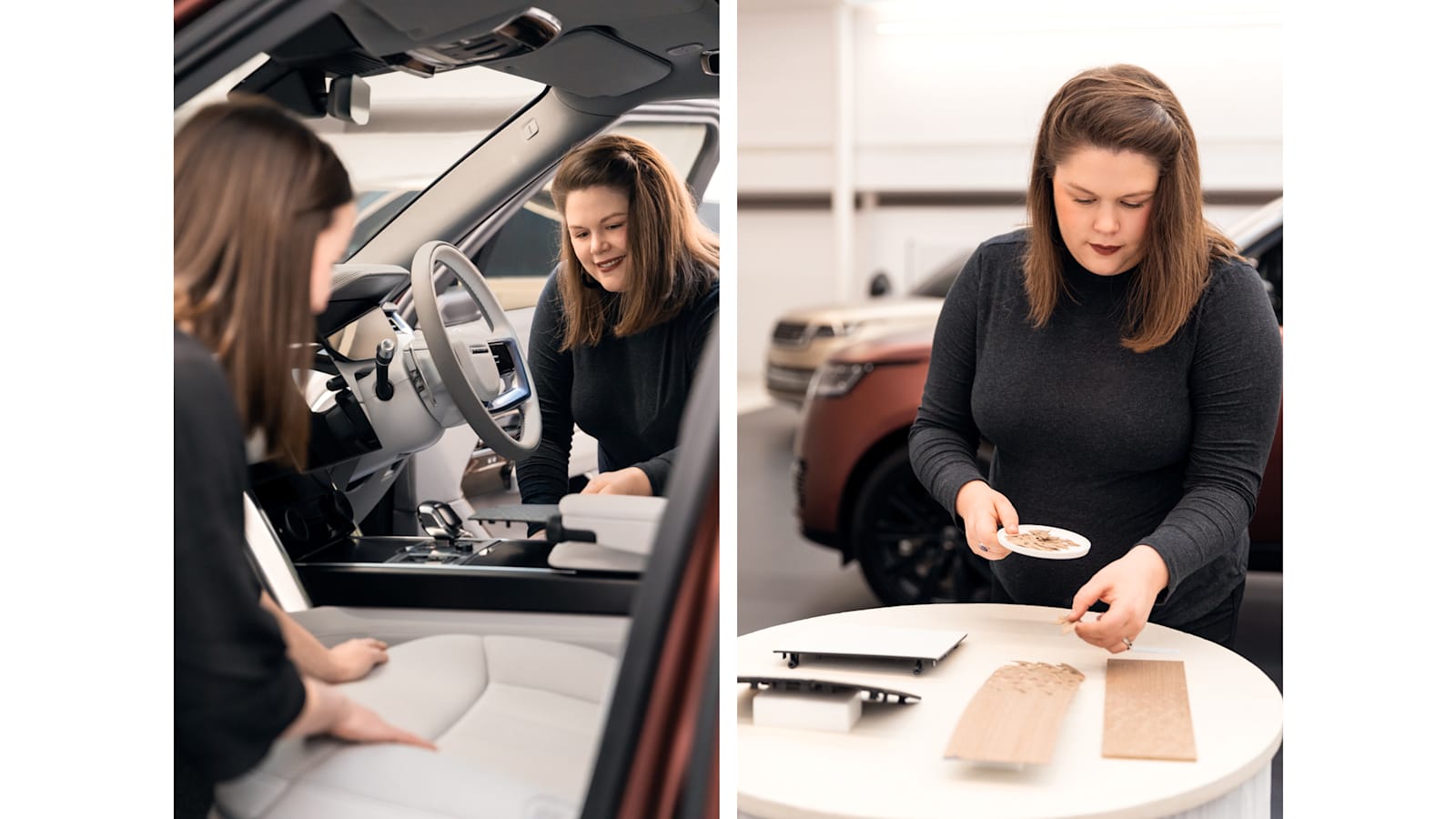
Autoblog: What’s something that most people don’t know about the selection of colors and materials for a new car?
Hannah: Probably how much we scrutinize every single detail. And I cannot emphasize that enough. We literally look at every single thing and we make models for everything as well. So, when we paint color, for example, we look at it in every light. We look at it on every angle. We have to assess colors on small scale and then on big scale, cause cars are incredibly big as well, so how does that translate onto a larger surface?
We assess it then from a test standards perspective. So whilst we might have a creation target that we want to really hit, we have to then go through this iterative design process to make sure it passes our test standards.
I think the level of attention to detail is just … it’s our life basically. And it’s also about assessing those materials and how they come together in one kind of beautiful harmonious product.
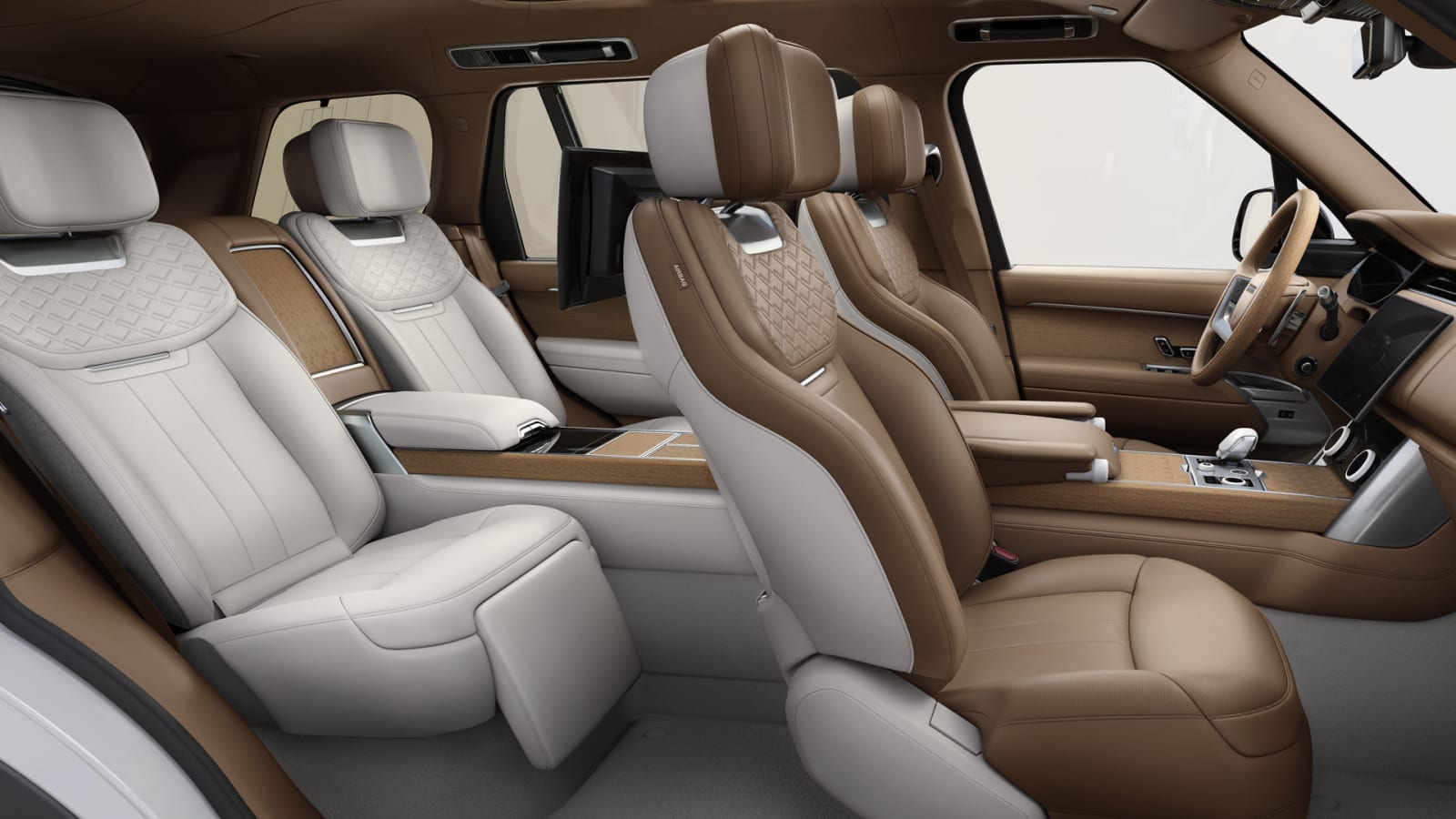
2022 Range Rover SV Serenity interior
Autoblog: How did you end up being a color and materials designer?
Hannah: I studied fashion design and I started my career in product design, working for outdoor brands and doing backpacks and things like that. The company I worked for also owned Lacoste-licensed footwear and they were looking for color materials designers. I think in most industries, the product designer will still do the color iterations.
I’d always done a bit of color design within my kind of product. Even as a student I was told I had an eye for color and that was one of the things I really enjoyed. So I thought I’ll give it a go. And then I just fell in love with color and materials design.
You know, it’s such a holistic design approach. You have to understand how everything is made, how the materials function, how it’s put together. So although we focus on A surface, it’s also about understanding the B surface as well. That means (understanding what’s) underneath, what makes up the substrates. What tools have you got, what’s under a seat, what foams, what laminations. So we might not be controlling what those are, but you have to understand how these products are processed to fully understand what you can and can’t do with the A surface.
I just find it so varied. You probably get to see more of the process by working on these materials than anyone else in the design team, really. So incredibly lucky and really love working color materials.
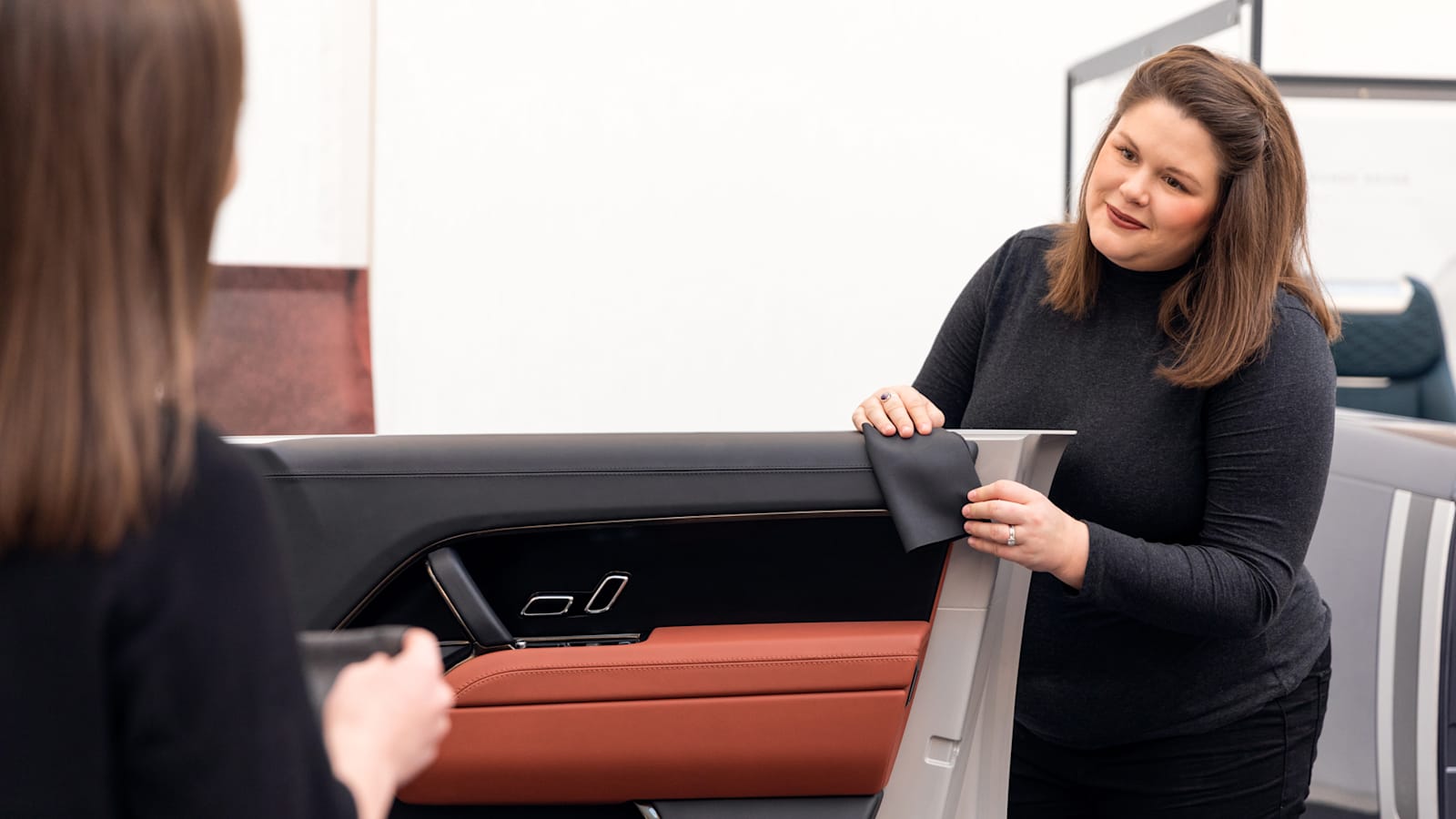
Autoblog: How many people work on your team and are their backgrounds similar?
Hannah: We have a really big color materials (team). I think in total we have 48 team members, and that is including directors and senior design managers and also the technical team. (They make) sure the test requirements have been met. They also make sure that when we master a color … that all of our other parts match. So for example, if you look in the car, we will have slightly different leather grades on doors, on different headliners, and they all have to look like a seamless application.
I personally look after five designers: some of them have graphics backgrounds, some of them have fashion backgrounds. So you probably find that out of all the design function, the color materials team have the most diverse career history. I think you’d probably find most of us fall into it, but, you know, for the right reason.


Autoblog: Where do you look for inspiration in color and materials design at Land Rover?
Hannah: We have very clear design direction from (design director) Gerry McGovern as to what the brand stands for. And that is, we don’t look to maybe trends (within the automotive industry) and things like that. We take a lot of inspiration from architecture, from other analogous industries like luxury watches, jewelry, that kind of thing. So it’s really quite a broad spectrum of research that we do.
And then we hone it down through the design process to make sure that we’ve got materials that are appropriate. We know a car is a second home to a lot of people … I think that’s something we take very seriously. We want people to feel at home in their cars and I think that’s where we focus very heavily on authenticity of materials. (For example), our new open pore wood lacquoring system means it just feels like wood, like it should, and not heavily lacquered or coated.
Obviously we look at other luxury brands as well and, and what our customers are going to be used to seeing when they go into a hotel, when they go into a restaurant, when they go into other luxury shopping experiences, what are they expecting to see and touch and feel? And that plays a really important part.
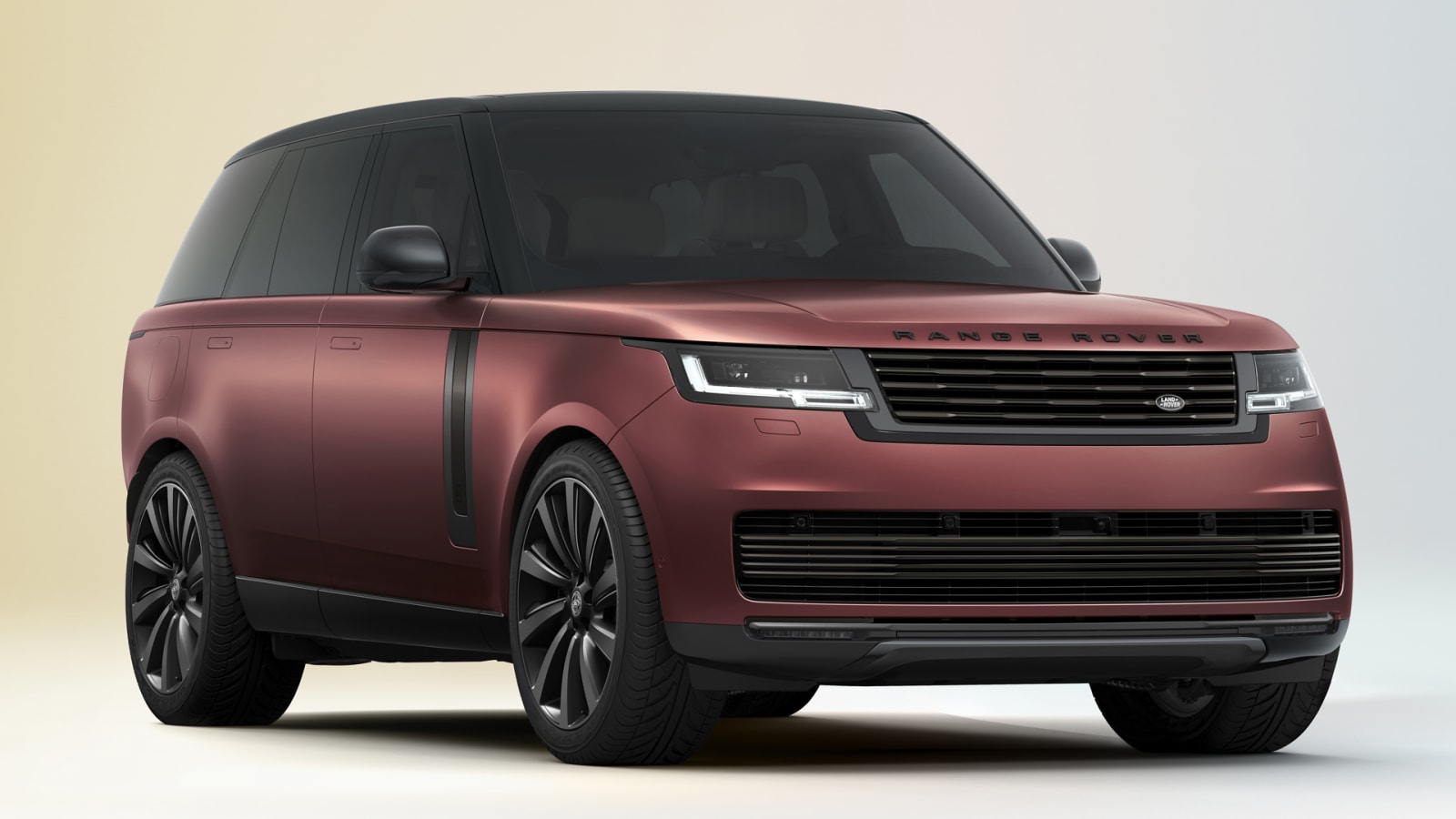
How would Hannah build her own 2022 Range Rover? It would be this, an SV Intrepid in Sunrise Copper.
Autoblog: It seems like both customers and brands have an increased openness to color and different materials. That must make your job that much more satisfying. Is there another development or trend you would love to see continue or catch on more?
Hannah: You’re absolutely right. It’s a fantastic time to be in the industry … I’m seeing a massive change in the importance of color and materials as a discipline. You know, it’s low investment, there’s no new tooling required a lot of time. It creates high visual value. And I think what I’m seeing is a real shift, not just at JLR, but in the industry as a whole and other industries as to how important it can be and how much it can make a product.
Customers are (also) becoming so much more sustainably aware, thinking about the environmental impact they have. That’s providing us with a lot of challenges, but also a lot of positive design changes as well.
We’re currently working on the first non-leather interior for SV [the ultimate Range Rover option]. And I think that’s quite a statement for us, you know. It’s a technical-feeling interior, it’s not an alternative to leather. It’s different, it’s a customer choice. I think that’s been really important to us to make sure it is a luxury offer. It is not an entry-level option for customers.
I think that shift away from leather is something that I want to become more popular. In particular, I think there’s a lot of scope and product enrichment that we can develop through textile application, whether it’s through jacquard, and graphic developments and textiles, whether it’s through sustainable yarns. And I think that they’re massively undersold.
There’s so much scope within textile. And I think we need to kind of delve into that and communicate it to the public because the world is your oyster when you get into those kinds of materials. It’s not skin, you’re not stuck with that material finish or how it has been treated or tanned. There’s much more choice.

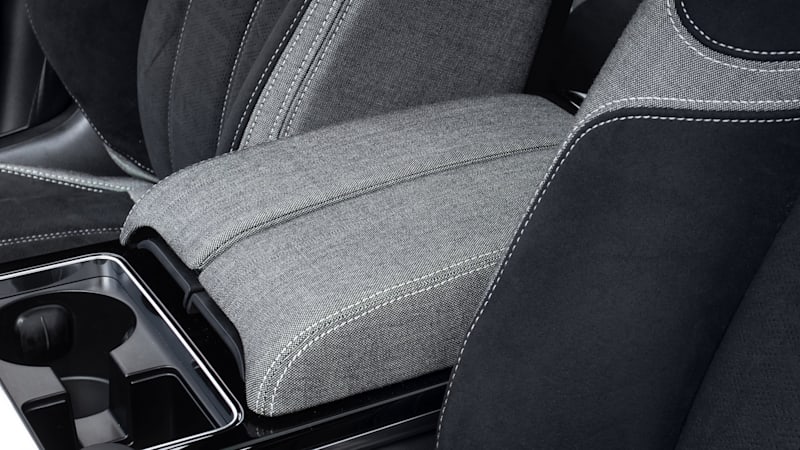
Leather-free Range Rover Velar interior with Kvadrat textile
Autoblog: What advice would you give to someone who might want to work in color and materials?
Hannah: I suppose for any kind of budding designers that are thinking about a career, I would say you don’t have to be an automotive or a car nut to get into color materials within the automotive industry. In fact, I think it makes us better car designers, by not being so bogged down in what other people have done or what other brands do. I think that’s a real strength for us. We approach it almost like it’s a clean white slate for us.
You’ll need an eye for color; a good taste level is really all you need. Everything else I think can be learned if you’ve got the taste level.
And the other thing I would say is don’t be afraid to give it a go. You know, take a product, and if you’re not a color materials designer, it doesn’t matter. Do 10 color iterations on a product. That’s what everyone else is doing. Even at my previous company very early on in my career, a backpack would have, you know, 10 or 15 color ways. You could also do a material exercise. How can you bring sustainable materials into your product? How can you make your product look different with color proportion? I think it’s just give it a go and see what happens and that can enrich the design process even for designers who don’t want to be specifically color materials or automotive.



